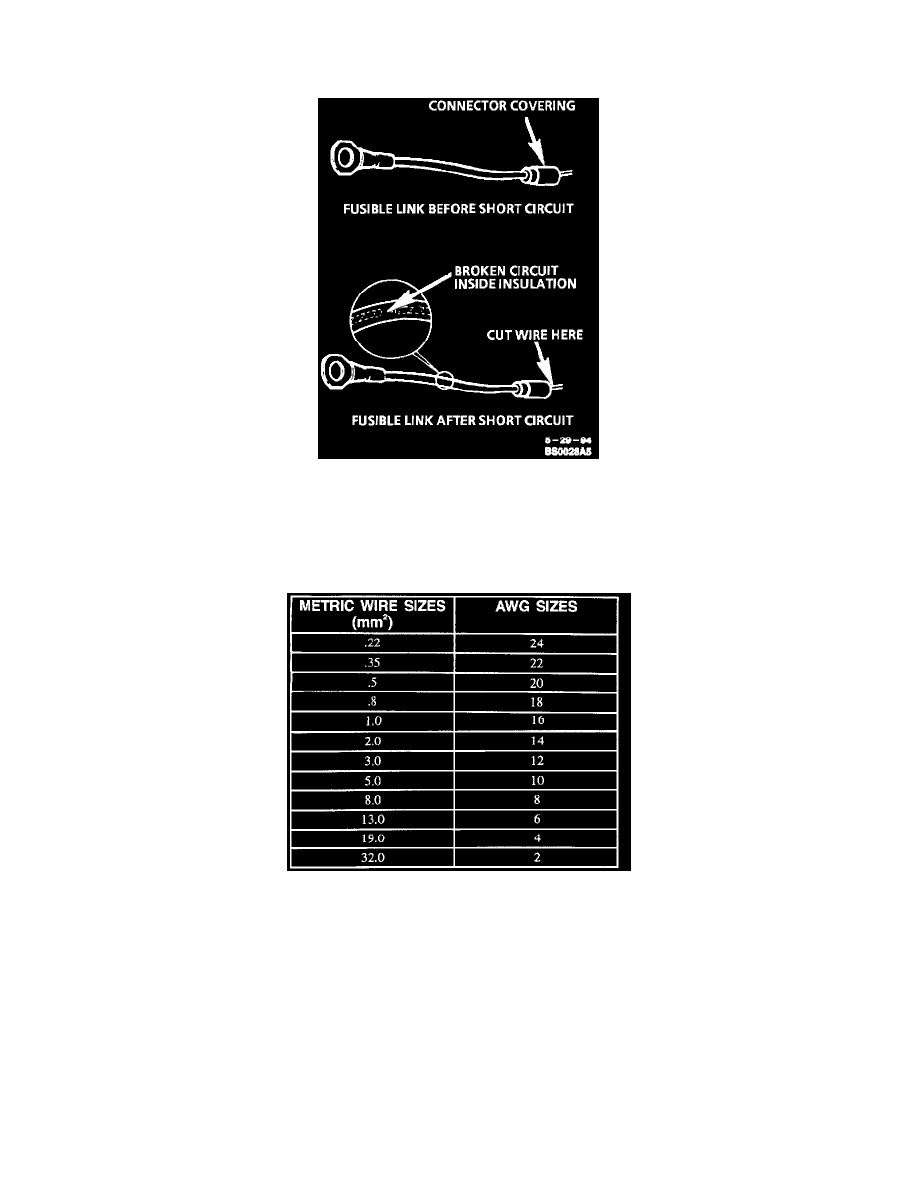Skylark V6-3100 3.1L VIN M SFI (1996)

Coolant Temperature Sensor/Switch (For Computer): Diagnostic Aids
Fusible Links
Good And Damaged Fusible Links
In addition to circuit breakers and fuses, some circuits use fusible links to protect the wiring. Like fuses, fusible links are "one-time" protection devices
that will melt and create an open circuit.
Not all fusible link open Circuits can be detected by observation. Always inspect that there is battery voltage past the fusible link to verify continuity.
Wire Size Conversion Table
Fusible links are used instead of a fuse in wiring circuits that are not normally fused, such as the ignition circuit. For AWG sizes, each fusible link is four
wire gage sizes smaller than the wire it is designed to protect. For example: to protect a 10 gage wire use a 14 gage link or for metric, to protect a 5 mm
Sq. wire use a 2 mm Sq. link, refer to Wire Size Conversion Table. Links are marked on the insulation with wire-gage size because the heavy
insulation makes the link appear to be a heavier gage than it actually is. The same wire size fusible link must be used when replacing a blown fusible
link.
Fusible links are available with three types of insulation: Hypalon(R), Silicone/GXL (SIL/GXL) and Expanded Duty. All future vehicles that use fusible
links will utilize the Expanded Duty type of fusible link. When servicing fusible links, all fusible links can be replaced with the Expanded Duty type.
SIL/GXI fusible links can be used to replace either SIL/GXI or Hypalon(R) fusible links. Hypalon(R) fusible links can only be used to replace
Hypalon(R) fusible links.
Determining characteristics of the types of fusible links are:
-
Hypalon(R) (limited use): only available in 0.35 mm Sq. or smaller and its insulation is one color all the way through.
